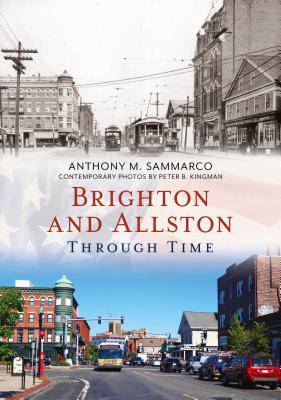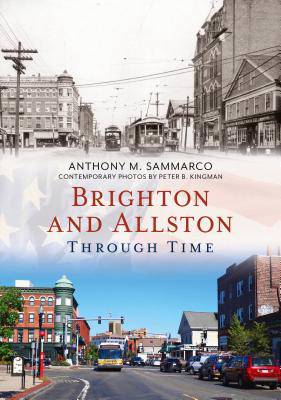
- Afhalen na 1 uur in een winkel met voorraad
- Gratis thuislevering in België vanaf € 30
- Ruim aanbod met 7 miljoen producten
- Afhalen na 1 uur in een winkel met voorraad
- Gratis thuislevering in België vanaf € 30
- Ruim aanbod met 7 miljoen producten
Zoeken
Omschrijving
Brighton and Allston Through Time outlines a neighborhood of the city of Boston which was once known as Little Cambridge before it became an independent town from Cambridge in 1807. With contemporary photographs by Peter B. Kingman, Anthony M. Sammarco has created a fascinating book of 19th- and 20th-century images that chronicles the history and development over the last hundred years. Once renowned throughout New England for its cattle industry as well as its horticultural gardens, Brighton and Allston became a well-known town. With prosperity, an ever-increasing population and proximity to the city of Boston, Brighton and Allston was annexed to the city in 1874 and henceforth became known as Ward 25. Over the century that followed, the neighborhood saw new places of worship, public and parochial schools, and housing ranging from one-family and two-family houses which were quickly augmented by three deckers and the largescale building of apartment buildings. During the first three decades of the 20th century, Brighton and Allston saw its population double, from 27,000 residents in 1910 to 47,000 residents by 1925 and today, with a population of 75,000 people, Brighton and Allston has a rich and ever evolving history, with demographics which are constantly in flux.
Specificaties
Betrokkenen
- Auteur(s):
- Uitgeverij:
Inhoud
- Aantal bladzijden:
- 96
- Taal:
- Engels
Eigenschappen
- Productcode (EAN):
- 9781635000788
- Verschijningsdatum:
- 10/12/2018
- Uitvoering:
- Paperback
- Formaat:
- Trade paperback (VS)
- Afmetingen:
- 163 mm x 231 mm
- Gewicht:
- 226 g

Alleen bij Standaard Boekhandel
+ 66 punten op je klantenkaart van Standaard Boekhandel
Beoordelingen
We publiceren alleen reviews die voldoen aan de voorwaarden voor reviews. Bekijk onze voorwaarden voor reviews.











